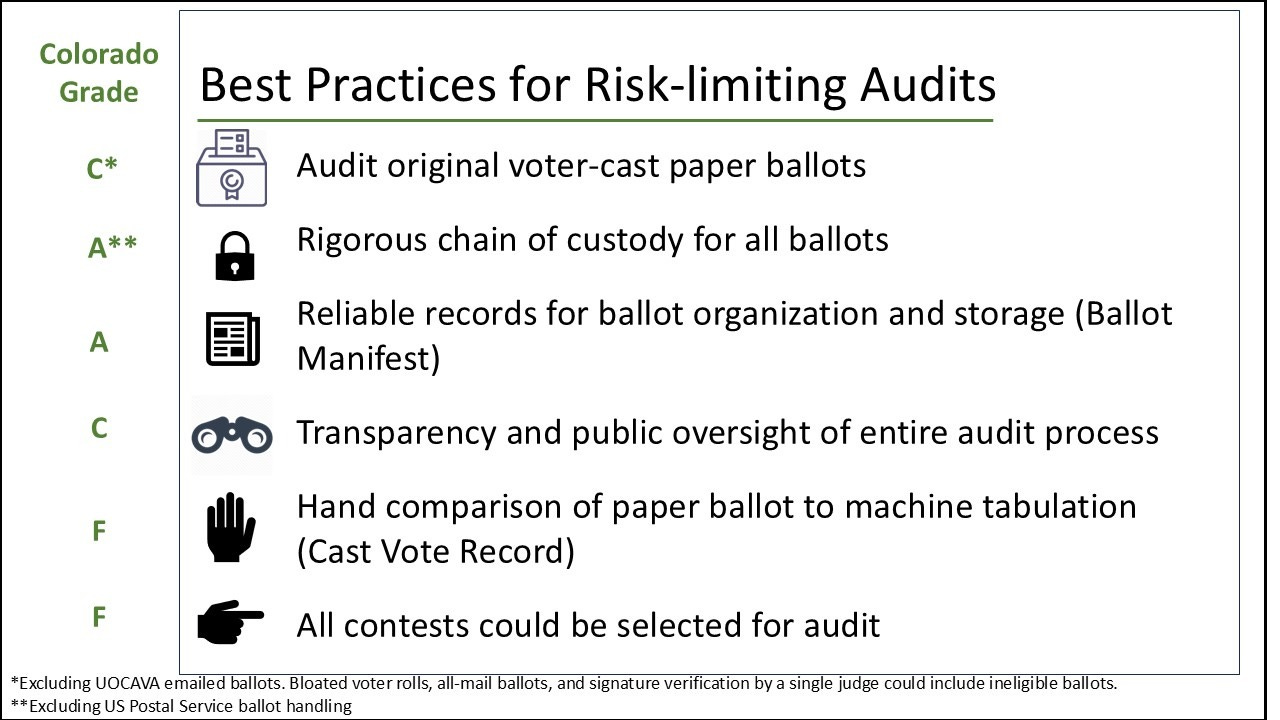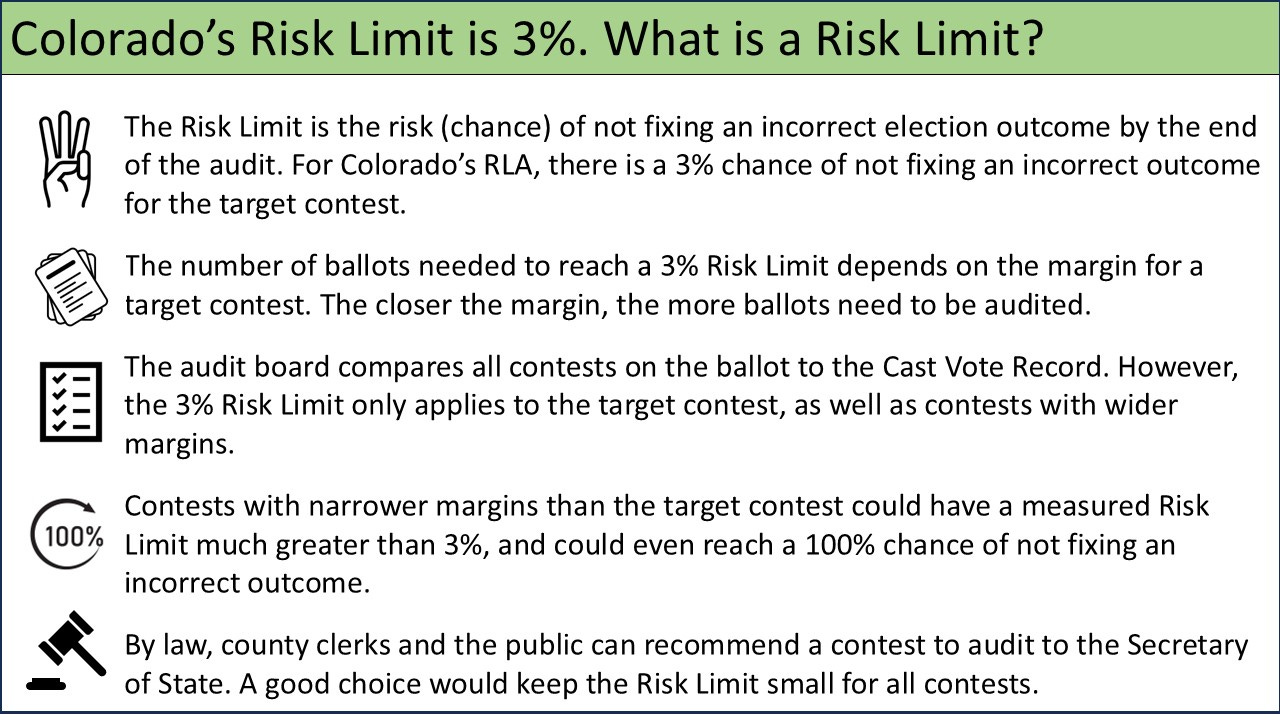Risk-limiting audits in Colorado have little chance of finding and fixing incorrect election outcomes
Secretary Griswold and County Clerks should publish the actual probabilities that the RLA will miss an incorrect outcome for every contest in Colorado.

Voters have the right to ensure that our votes are counted correctly. The Risk-limiting Audit (RLA) is the only method available for Colorado voters to be assured that wrong election outcomes are detected and fixed. Yet, the RLAs in Colorado have little chance of fixing any incorrect outcomes because the Secretary of State is violating key assumptions of the RLAs and not complying with best practices.
Fundamental to RLAs is the statistical concept of a risk limit. In plain English, the risk limit is the risk (chance) of not discovering and fixing wrong election outcomes. To ensure our elections are valid, we want the chance of missing a wrong outcome to be very low. But the risk limit only applies to the contests that are selected to be audited, and typically Sec. Griswold selects contests that do not require very many ballots to be audited. This is a significant problem for the contests that are not selected.
Under Colorado election law, the public can recommend what contest to audit. Secretary Griswold ignored our emails recommending that she target the closest contest to audit in Larimer County. We chose this contest in order to minimize the chance that wrong outcomes would be missed for all contests in the County. Instead, Sec. Griswold selected one of the worst contests to audit in Larimer County because it had one of the widest margins (~32,000 votes). As a result only 107 ballot cards will be audited in the County.
This sample of 107 ballots is only tiny fraction (0.05%) of the 230K ballots cast in the County, and has little chance of detecting incorrect outcomes for most contests in the November 2024 election. For the 9 contests with a margin less than 5000 votes, there is more than an 80% chance that the audit will not discover and fix wrong outcomes for these contests.
Full transparency requires that the measured risk limit is published for every contest in Colorado.
Based on the number of ballots sampled, we can determine the measured risk limit for every contest. In other words, for 107 audited ballots, we should know the risk of missing an incorrect outcome for all contests. In Larimer County, the measured risk limit ranges from 3% to 100%, with an average of 51% for contested candidate contests.
With such high measured risks, is it any wonder that the Colorado RLAs have never found any tabulation errors?
Sec. Griswold proudly claims at the end of each RLA that the 3% risk limit has been reached. This is misleading because the 3% risk limit only applies to the target contest and contests with larger margins. To be fully transparent about the ability of the RLAs to detect incorrect election outcomes, Sec. Griswold should publish the measured risk limit for every contest in Colorado. She knows the measured risk limits, but has chosen not to share this with the public, and instead continues to mislead the voters. This is called lying with statistics. I doubt most voters would be satisfied with the odds if they knew them.
In addition, every county clerk in Colorado should publish the measured risk limits for every contest in their county.
It is time to conduct the RLAs correctly and transparently so that Colorado voters can have confidence in the outcome of the elections.




There is a sensitivity setting to signature acceptance by the scanner. There is no visibility into this setting.
Thanks for an illustrative article on the RLA. The elephant in the room, in my opinion, as an experienced elections observer in two states, is that there is no visibility in seeing what the scanner's signature acceptance is.
Put another way, there is no way for an observer, judge or Political party, to ascertain the validity of the signatures that were accepted and not seen by signature verification judges.
From my experience, the signatures that make it to the judges for adjudication are somewhat different to grossly different from the latest exemplar of the voter's signature. What about the signatures that were different, but accepted by the scanner.
Is this why we have a "gold standard" for elections accuracy? I wonder...